If you’ve ever sat down at a French table, you may have noticed the distinctive bee (or fly) emblem on the flatware. These are Laguiole flatware — simple, elegant tools that carry with them a sense of French authenticity. They are beautiful to hold, and they remind us that in France, even everyday objects are made with care.
So, what makes them so special? To really appreciate them, it helps to know their story — where they come from, how they’re made, and why they’ve become such a symbol of French living.
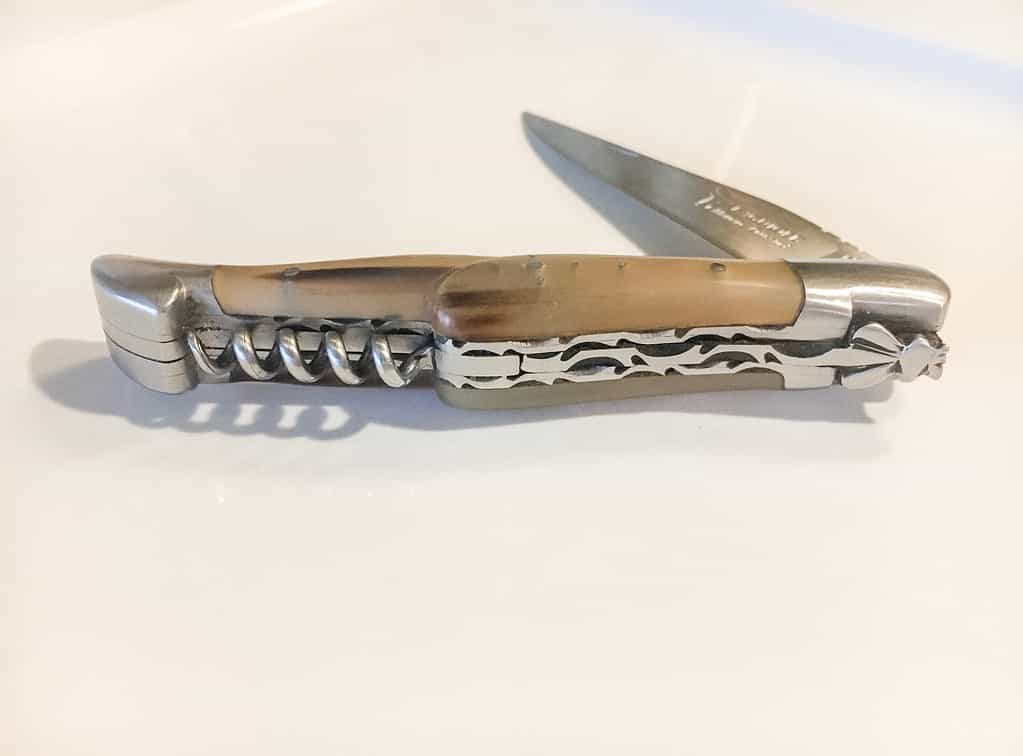
The Origins of Laguiole Knives
Laguiole, France, is a small village in the Occitanie region of southern France. It is the birthplace of these knives, first created in the early 1800s. After WWI, production shifted to Thiers — a nearby town that is considered the knife capital of the world, responsible for over 70% of France’s knife production.
For over 150 years, Laguiole and Thiers have worked together, preserving a tradition of authentic French knives that has become known worldwide. Like many French traditions, the Laguiole knife was born out of practicality, but has endured because of craftsmanship and beauty.
Craftsmanship and Meaning
It’s important to understand that “Laguiole” is not a brand name. Instead, it refers to a traditional shape and style of knife. Authentic knives are made by a handful of ateliers in Laguiole and Thiers, such as Forge de Laguiole and Fontenille Pataud, and each one is a true work of art.
The production process has hardly changed: one craftsman makes a knife from start to finish, using only the highest quality raw materials — often wood, horn, or bone. Because they are handmade, every knife is slightly different. Some handles are inlaid with a small cross of pins, a nod to the shepherds who once used their knives for prayer in the fields, calling them “the little chapel.”
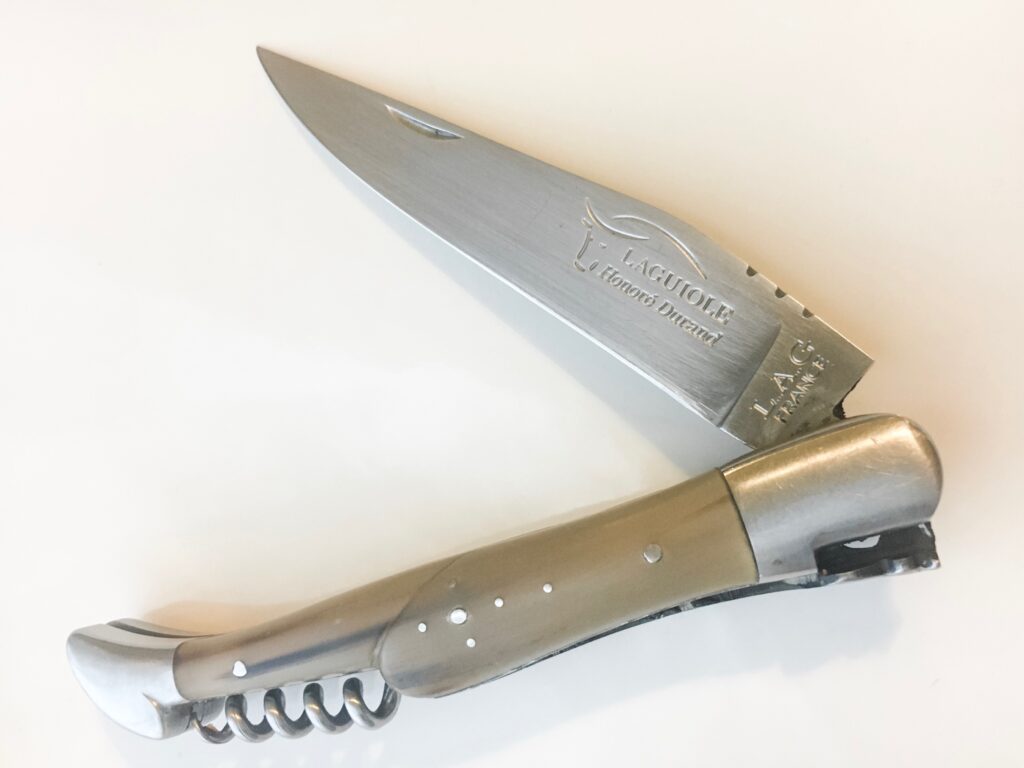
Another signature detail is the small ornament at the top of the handle spring. Purists will remind you that this was originally a fly (la mouche), but over time it has often been described as a bee, a symbol of France since the Napoleonic era. Whether you call it a bee or a fly, this little flourish has become a hallmark of Laguiole craftsmanship.
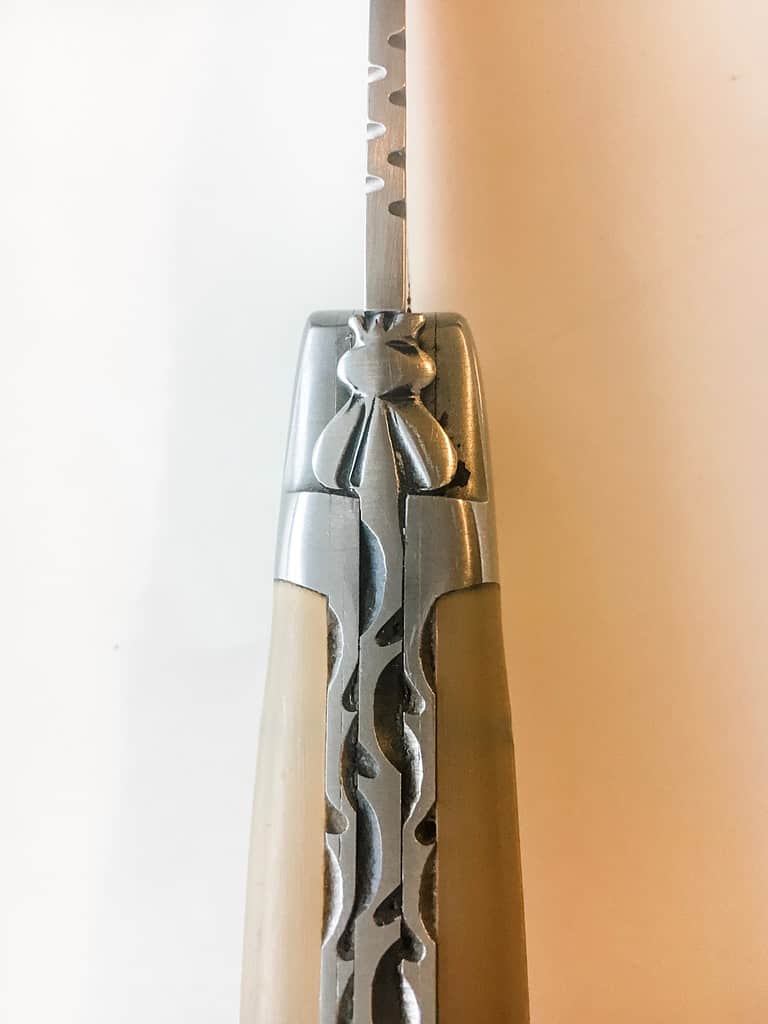
Even today, French families will set the table with Laguiole cutlery. They aren’t just practical tools; they are pieces of tradition, meant to be used and enjoyed for a lifetime.
Counterfeits and How to Spot Them
Because the name Laguiole is not protected, many knives with the same shape and style are mass-produced in countries like China or Pakistan. They may look similar at first glance, but they are made quickly, with low-quality materials.
The French, however, have always valued quality over quantity. A single handcrafted Laguiole knife, made in France by a skilled artisan, is meant to last for decades. It’s not just about having a knife on the table — it’s about having one that carries history, care, and authenticity.
If you’d like to be sure you’re choosing an authentic piece, here are a few details to look for:
- The bee or fly: Forged as part of the spine, not glued or welded.
- The blade: Straight-edged for traditional pocket knives. For table knives, some authentic makers do offer serrated blades, but the quality and maker’s stamp will always set them apart.
- The stamp: Look for “Veritable Laguiole” and Made in France. Some will include the craftsman’s name or “Inox” for stainless steel.
- The handle: Always made of natural materials like wood, horn, or bone. Never plastic.
- The price: Handmade pieces reflect the work that goes into them. Authentic knives are an investment, often costing far more than the mass-produced sets.
Choosing authentic Laguiole cutlery is less about having a drawer full of knives, and more about owning one or two pieces that carry real value.
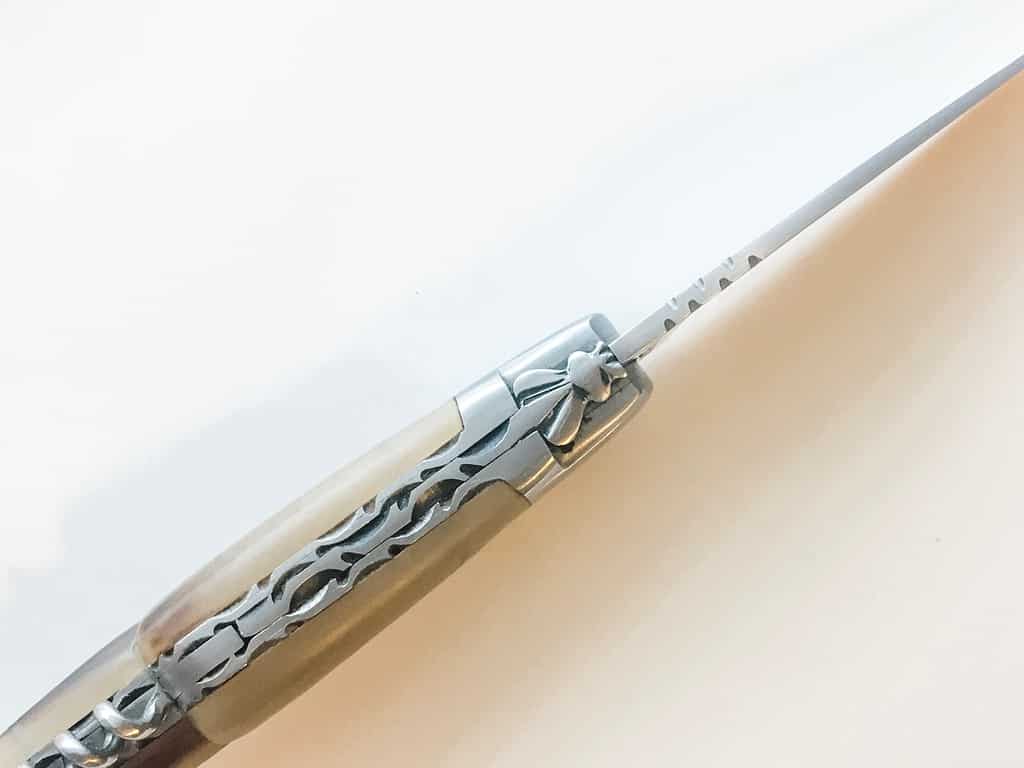
Choosing Authentic Laguiole Knives and Flatware
If you’d like to own a piece of this tradition, look for makers such as Forge de Laguiole, Honoré Durand, Fontenille Pataud or Jean Dubost. These are names you can trust.
There are many options — steak knives, full flatware sets, or even cheese knives. They make wonderful gifts, especially for weddings or anniversaries, since they are both useful and lasting.
If you aren’t ready to invest in a full set, consider starting with one authentic knife. I’d rather have a single true Laguiole than a drawer full of counterfeits.
How to Use Laguiole at Home
So, how does a Laguiole knife fit into everyday life? In France, they aren’t reserved for display — they are meant to be used.
- At the apéro table, a Laguiole knife is perfect for slicing cheese or charcuterie.
- For family meals, Laguiole flatware adds a touch of authenticity to the table.
- During the holidays, a Laguiole set makes a really special gift — one that carries French tradition with it.
Just as stocking your pantry with French staples brings France into your kitchen, setting the table with Laguiole cutlery brings a little piece of French living into your home. It’s beauty and practicality working together — which is at the heart of French life.
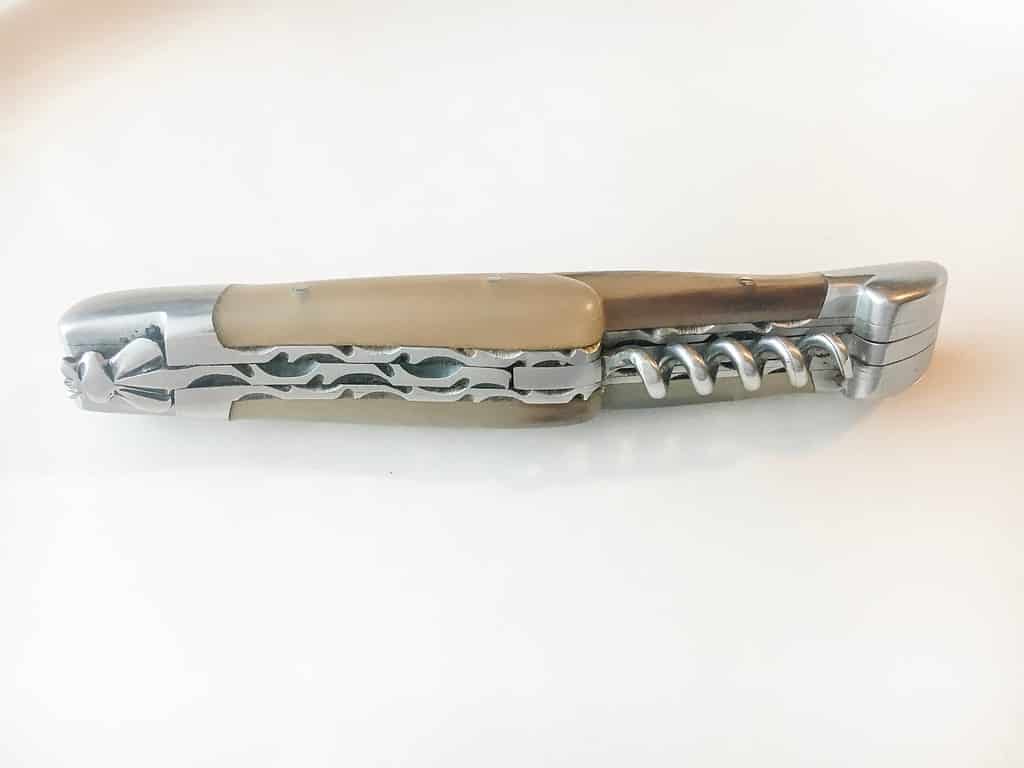
Closing Thoughts
For me, a Laguiole knife is a perfect example of the French way of living — choosing fewer things, but better ones. Just as I’d rather stock my pantry with a handful of good staples than clutter it with unnecessary items, I’d rather have one authentic Laguiole knife than a set of counterfeits.
It isn’t about perfection or luxury — it’s about enjoying the beauty and practicality of a tool made with care. Whether you use it to slice cheese for an apéro, set your table with Laguiole flatware, or give a set as a gift, these knives remind us that quality has a place in everyday life.
And like so many French traditions, they show us that even the simplest daily rituals — sharing a meal, setting a table, opening a knife — can hold meaning when we choose things that last.
À bientôt,
Gaby

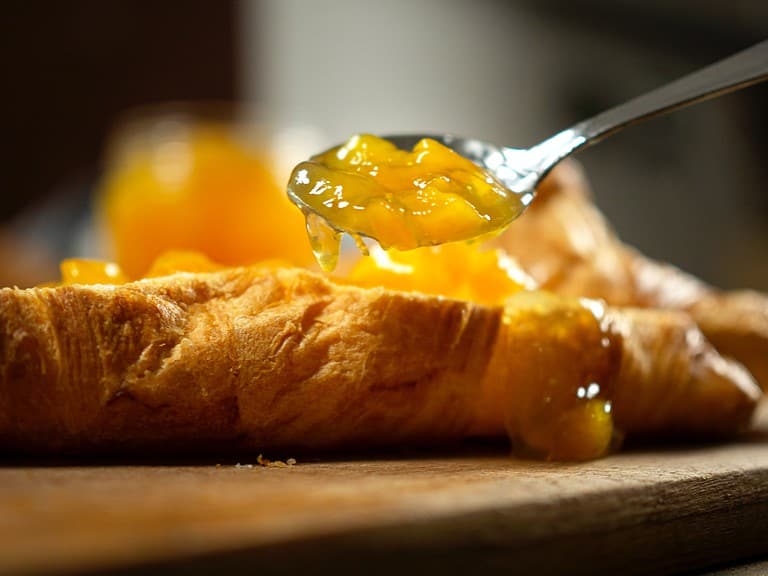





Thank you for this information, Gaby. I’ve often looked at buying these knives but was worried that I wasn’t getting the real thing!